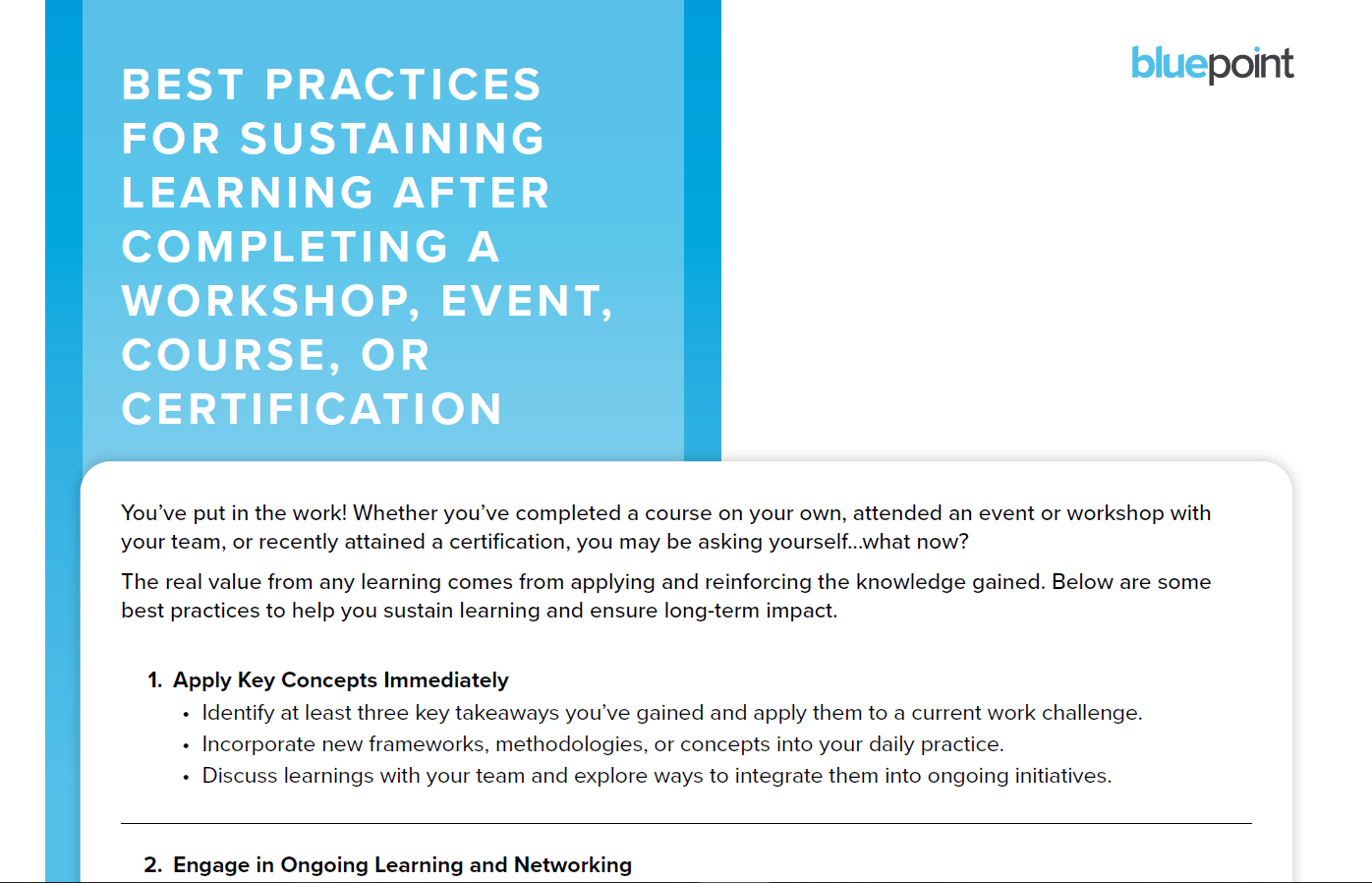The first 90 days a leader assumes new responsibilities is a critical time to establish credibility and set the direction for the team. Much has been written on this subject, and one terrific resource for this transition is a book written by Michael Watkins in which he offers many helpful suggestions for leaders.
Today, and in my next post, however, I’d like to share my personal experience with two strategies for helping leaders through transitions. One is an individual activity, and the other is intended for groups. I certainly can’t claim to be the author of these approaches, but I can assure you they’ve proven to be supremely effective in real-life situations I’ve encountered.
Let’s first address the individual exercise. It’s essential for leaders in a new role to quickly assess their stakeholders, the overall environment, and their team. The need for this external analysis is both necessary and obvious. However, it’s all too common for leaders to overlook the equally relevant assessment of themselves in their new capacity. We seem to forget that, although we’re the same person, our new context requires us to change. I view this as stepping through a portal into a new world. Many leaders continue to do what they have done and logically follow the thinking “Well, I must be doing something right to have secured this role.” While somewhat valid, this mindset mistakenly assumes that what you’ve done before will be effective once again. Nope. The players have changed, the objectives have changed, and your team has changed.
A remarkably effective activity of self-examination is what I call creating an “Inventory of Intention.” And while the instructions are quite basic, I have found it to be extremely transformative and impactful for leaders who have immersed themselves in it. Here’s what you do:
Grab two pieces of paper. At the top of one, write “What to Bring With Me” and on the other “What to Leave Behind.” The goal is to identify and document what elements of your previous leadership behavior, mindset, approach, and beliefs need to be carried over into your new position and which should be discarded. Careful reflection and objective assessment will help you select which parts of your leadership practice will be helpful through your transition. What do you do particularly well, and how can this help you as you move forward? What will this new role require from you that you’ve previously demonstrated with proficiency? Which elements of your unique leadership style can you lean on in this particular context? Write these skills, qualities, characteristics, and strengths on the first piece of paper.
The second sheet might be a bit more challenging. Here, your need to identify components of your leadership style that may have served you well in the past but that might not be as meaningful moving forward. It also gives you an opportunity to determine what shouldn’t have been part of your approach. Because your environment is a clean slate, you can discard any unwanted or ineffective practices to begin your new role with an energized freshness. You have a chance to let go of unwanted or ineffective practices to be the next-version leader you wish to be. This may include habits needing adjustment, lessons learned, development areas to lean into right away, and self-generated beliefs and assumptions about expectations. The idea is to create a clean start, like a snake shedding its skin.
The directions for the exercise are quite simple. The execution process? Not so much. You’ll find that this requires concentrated reflection, and it can be helpful to include key stakeholders in your process. Ask others what they would write on your sheets. I also highly recommend benefiting from a certified coach, if possible.
Are you making a leadership transition or know someone who is? Jump into the activity.
About The Author

Neil Bryant
Neil is committed to the development of leaders… executive, mid-level, and emerging… and supporting all professionals who seek to elevate their performance and enjoyment of work. Following a meaningful career in sales, marketing, consulting, and business management in large corporations, he turned his focus to the leadership development and Executive Coaching fields. His passion lies in enabling leaders, and all committed professionals, to become the most effective and satisfying version of themselves, particularly in the context of their work environment.
Related Resources

Leadership Pulse: Leaders as People Developers
leadership-essentials

Beyond the Individual: How Coaching Transforms Teams
leading-teams

7 Leadership Strategies to Combat Change Fatigue
leading-change
Subscribe to newsletter
Subscribe to our newsletter today and receive innovative, insightful and thought provoking resources (videos, webinars and articles) all effective tools for developing leadership talent.
This is a gated resource. Contact sales at info@bluepointleadership.com for more information or reach out here: Contact Us
This is a member-only resource. Contact sales at info@bluepointleadership.com for more information.


